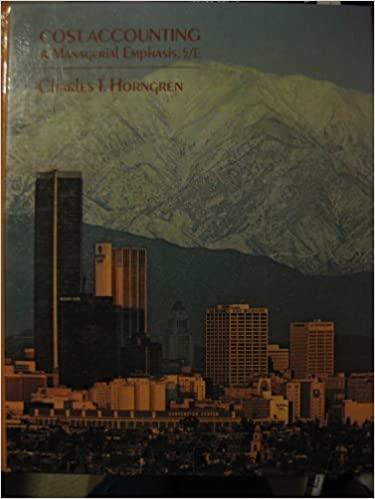Question
Ali Ibrahim is a sole trader and his financial year ends on 31 December every year. He provided the following balances on 31 December 2017.
Ali Ibrahim is a sole trader and his financial year ends on 31 December every year. He provided the following balances on 31 December 2017. Items Amounts ($) Accumulated depreciation - equipment 3,400 + 100 6 Accumulated depreciation - furnishing 4,700 + 100 7 Administrative expenses 2,880 60 7 Allowance for receivable 420 + 100 6 Bank overdraft 800 + 100 6 Capital at 1 January 2017 22,000 + 20 6 Cash 1,240 + 100 6 Discount allowed 940 + 50 6 Discount received 1,160 + 50 6 Drawings 720 + 20 6 Equipment 58,000 + 100 1 Furnishing 32,900 + 100 6 General expense 2,340 10 6 Insurance expense 540 + 60 7 Inventories at 1 January 2017 3,900 + 100 6 Marketing expenses 2,460 + 10 6 Purchases 37,520 + 30 1 Purchases return 860 + 40 6 Rental expense 4,800 70 1 Salaries and wages expense 13,700 + 70 1 Sales return 680 + 40 6 Sales revenue 132,220 + 30 1 Trade payable 7,880 + 100 1 Trade receivable 11,000 + 100 7 The following additional details are discovered after balances were extracted on 31 December 2017. Equipment costing $(2,000 + 100 6) with a scrap value of $(100 + 10 1) was sold for $(200 + 10 6) cash during the year and this equipment was fully depreciated by the date of disposal. Relevant accounting entries were not yet made for the disposal of the equipment. It is the business policy to depreciate equipment using straight line method on cost at 10% per annum. Furniture is depreciated using reducing balance method of depreciation at 20% per annum. No furniture was bought or sold during the year. The business pays fire insurance annually in advance on 1st October each year. The annual fire insurance payment made on 1st October 2016 was $(100 + 40 6) and the payment made on 1st October 2017 was $(100 + 40 1) by cash. No accounting entry has been made for the latest fire insurance payment. The rent expense of the office is made quarterly in arrears on 1 February, 1 May, 1 August and 1 November each year in equal installments. The office rent payment is $(2,400 + 36 6) per year. The total rental expense for the year did not include the office rent for the last quarter of the year because it was still outstanding at the end of the year. It was decided that debts of $(400 + 10 6) were to be written off because those customers declared bankrupt. A special allowance of 25% has to be made from a debt of $(1,000 + 20 7). It is the policy of the business to make a general allowance 10% for trade receivable after deducting any debts considered for special allowances and all irrecoverable debts. On 1st December 2017 the payable control account showed a credit balance of $(8,600 10 6) and a small balance of $(20 6) on the debit side. Credit purchases during December 2017 were $(4,200 10 6) and cash purchases were also made during the month. Payments made to suppliers, excluding cash purchases, and after deducting settlement discounts were $(3,300 10 6). Purchases returns during December 2017 were $(120 + 10 6) and there was a contra entry with receivables control account for $(140 + 10 1). The small balance on the debit side was fully settled during the month and there is no other entries missing in the payable control account, except for the amount of cash discounts received during December 2017 for early settlements of suppliers accounts, for which proper accounting entries were not yet made. The bank statement received on 31 December 2017 showed bank charges and bank interest of $(160 + 10 1) and $(180 + 10 6) respectively, for which no accounting entries has been made in the cash book. It was also noted that unpresented cheques of $(40 + 2 6) and outstanding lodgments of $(60 + 3 7) were not recorded on the bank statement. Administrative expenses of $(80 + 4 6) were incorrectly debited to the marketing expenses account. Both sales and sales returns accounts were under casted by $(140 + 5 6) each. General expenses paid $240 was correctly entered in the cashbook but incorrectly entered in the general expense account as $420. Inventories value at 1st December 2017 was at $(4,000 20 1) which consist of 100 units. On 10th December the business sold 30 units for $(80 + 1 6) each and on 15th December another 40 units were sold for $(82 + 1 7) each. On 20th December 90 units were purchased for $(50 6) per unit and there were no more sales or purchases after that date until the year end. All the sales and purchases transactions were properly entered in the relevant accounts. The business uses AVCO (weighted average costing) method for inventory valuation. REQUIREMENTS 1. Prepare Alis statement of profit for loss for the year ended 31 December 2017. (50 marks) 2. Prepare Alis statement of financial position as at 31 December 2017. (30 marks) 3. Identify any 5 accounting concepts and explain how a sole trader like Ali Ibrahim can apply these concepts in his business (in approximately 500 words). (20 marks)
Step by Step Solution
There are 3 Steps involved in it
Step: 1

Get Instant Access to Expert-Tailored Solutions
See step-by-step solutions with expert insights and AI powered tools for academic success
Step: 2

Step: 3

Ace Your Homework with AI
Get the answers you need in no time with our AI-driven, step-by-step assistance
Get Started


